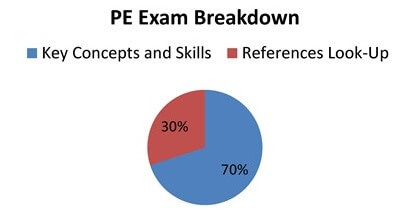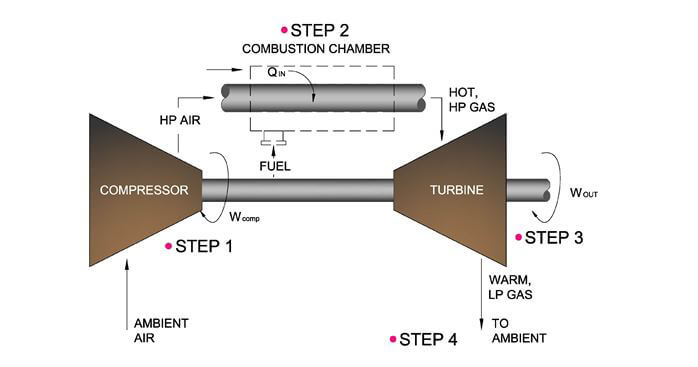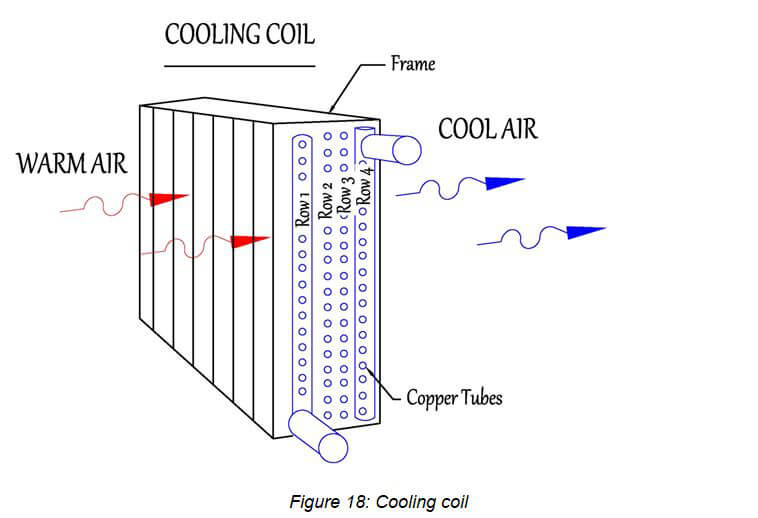
Engineering Pro Guides is your guide to passing the Mechanical & Electrical PE and FE Exams
Engineering Pro Guides provides mechanical and electrical PE and FE exam technical study guides, practice exams and much more. Contact Justin for more information.
Email: contact@engproguides.com
EXAM TOOLS
Key Concepts & Skills
for the Thermal and Fluids P.E. Exam
Introduction
One of the most important steps in an engineer's career is obtaining the professional engineering (P.E.) license. It allows an individual to legally practice engineering in the state of licensure. This credential can also help to obtain higher compensation and develop a credible reputation. In order to obtain a P.E. license, the engineer must first meet the qualifications as required by the state of licensure, including minimum experience, references and the passing of the National Council of Examiners for Engineering and Surveying (NCEES) exam. Engineering Pro Guides focuses on helping engineers pass the NCEES exam through the use of free content on the website, www.engproguides.com and through the creation of books like sample exams and guides that outline and teach you how to pass the PE exam.
The key to passing the PE exam is to learn the key concepts and skills that are tested on the exam. There are several issues that make this key very difficult. First, the key concepts and skills are unknown to most engineers studying for the exam. Second, the key concepts and skills are not contained in a single document. The technical guide teaches you the key concepts and skills required to pass the Thermal and Fluids PE Exam.

The full exam tests the key concepts and skills which will count for approximately 70% of the PE exam. The remaining 30% of the PE exam will be based on looking up solutions in your references. If you have sufficient experience in the field, then you will know the answers to these types of problems. If you don't have the experience, then you will need to be knowledgeable in the various Thermal and Fluids References. You can test your knowledge through the references exam.
What is on the Thermal and Fluids PE Exam?
In order to determine what is on the PE exam, I have gone through the NCEES outline topics, shown below, and researched each topic and subtopic. Next, I ensured that the material met the following 4 criteria:
- (1) Must be commonly encountered in the Thermal and Fluids field
- (2) Must be testable in roughly 6 minutes per problem
- (3) Must be used by practicing engineers and
- (4) Must test the principle or application.
Through this technique I have come up with the key concepts and skills that are on the Thermal and Fluids PE exam. These key concepts and skills are taught in the technical study guide and are tested on the full exam. The references exam covers any other material that is missed in the technical study guide and full exam. The references exam focuses on problems that require you to use your references to find solutions, which is a skill needed in actual practice.
The Mechanical Thermal and Fluids PE exam will focus on the following topics as indicated by NCEES. http://ncees.org/engineering/pe/
NCEES Outline
- I. Principles (32 questions)
-
A) Basic Engineering Practice (6 questions)
- 1 Engineering terms, symbols, and technical drawings
- 2 Economic analysis
- 3 Units and conversions
-
B) Fluid Mechanics (6 questions)
- 1 Fluid properties (e.g., density, viscosity)
- 2 Compressible flow (e.g., Mach number, nozzles, diffusers)
- 3 Incompressible flow (e.g., friction factor, Reynolds number, lift, drag)
- C) Heat Transfer Principles (e.g., convection, conduction, radiation) (6 questions)
- D) Mass Balance Principles (e.g., evaporation, dehumidification, mixing) (4 questions)
-
E) Thermodynamics (6 questions)
- 1 Thermodynamic properties (e.g., enthalpy, entropy)
- 2 Thermodynamic cycles (e.g., Combined, Brayton, Rankine)
- 3 Energy balances (e.g., 1st and 2nd laws)
- 4 Combustion (e.g., stoichiometrics, efficiency)
-
F) Supportive Knowledge (4 questions)
- 1 Pipe system analysis (e.g., pipe stress, pipe supports, hoop stress)
- 2 Joints (e.g., welded, bolted, threaded)
- 3 Psychrometrics (e.g., dew point, relative humidity)
- 4 Codes and standards
-
A) Basic Engineering Practice (6 questions)
- II. Hydraulic and Fluid Applications (24 questions)
-
A. Analysis (18 questions)
- 1. Pumps and fans (e.g., cavitation, curves, power, series, parallel)
- 2. Compressors (e.g., dynamic head, power, efficiency)
- 3. Pressure vessels (e.g., design factors, materials, pressure relief)
- 4. Control valves (e.g., flow characteristics, sizing)
- 5. Actuators (e.g., hydraulic, pneumatic)
- 6. Connections (e.g., fittings, tubing)
- B. Distribution Systems (e.g., pipe flow) (9 questions)
-
A. Analysis (18 questions)
- III. Energy/Power System Applications (24 questions)
-
A. Energy/Power Equipment (8 questions)
- 1. Turbines (e.g., steam, gas)
- 2. Boilers and steam generators (e.g., heat rate, efficiency)
- 3. Internal combustion engines (e.g., compression ratio, BMEP)
- 4. Heat exchangers (e.g., shell and tube, feedwater heaters)
- 5. Cooling towers (e.g., approach, drift, blowdown)
- 6. Condensers (e.g., surface area, materials)
- B. Cooling/Heating (e.g., capacity, loads, cycles) (6 questions)
- C. Energy Recovery (e.g., waste heat, storage) (5 questions)
- D. Combined Cycles (e.g., components, efficiency) (5 questions)
-
A. Energy/Power Equipment (8 questions)
How to Determine What Will be on the PE Exam?
Find Resources on the NCEES Outline Topics
The Power References page has all the necessary resources you need for each individual topic and subtopic. You should use this page to gather all the necessary resources. Once you have the resources, then you need to narrow down the information that deals specifically with the PE exam.
Focus on Material that Meets the Following Four Criteria
The amount of resources and topics on the NCEES outline are daunting. You need a way to focus your studying on the material that will be on the PE exam. The best way to focus your studying is to use the following four criteria. If certain material within the resources does not meet the four criteria then you can glance over the information. If the information does meet the four criteria then you should make sure you understand the information well and if necessary you should tab the information or write down the formulas/equations for quick and easy use.
Criteria 1: Must be Commonly Encountered

(1) First, the concept and skill must be commonly encountered in the Thermal & Fluids field of study. For example, in the Thermal & Fluids field: Power cycles, steam properties, pump sizing, fan sizing, determining friction losses and calculating net positive suction head are regular occurrences in the Thermal & Fluids field.
Criteria 2: Must be Tested in 6 Minutes per Problem

(2) Second, the skill and concept must be testable in roughly 6 minutes per problem. There are (40) questions on the morning exam and you will be provided with 4 hours to complete the exam. The same is true for the afternoon portion of the exam. This results in an average of 6 minutes per problem. This criterion limits the complexity of the exam problems and the resulting solutions.
For example, pressure drop calculations are common in the Thermal & Fluids field, but the calculation is often very lengthy because of the number of steps involved, especially if a unique fluid and flow condition is used. Thus, common fluids like water/air and common pipe/duct materials are used.
Criteria 3: Must be Used by Practicing Engineers

(3) Third, the key concepts and skills must be used or be known by practicing Mechanical engineers in the Thermal & Fluids field. This criterion is similar to the first criterion. However, this criterion filters the concepts and skills further by limiting the field to material encountered and used by practicing engineers. The HVAC & Refrigeration, Thermal & Fluids and Mechanical Systems & Materials fields are vast and there are many different avenues an engineer can take. Two diverging paths are those engineers involved in research and those who practice. Research engineers are pushing the boundaries of the field and are highly focused in their specific area of the field. The Professional Engineering exam does not cover emerging technologies or highly focused material.
An easy example of material used by practicing engineers is the group of equipment questions on the exam. The equipment questions are regularly encountered by practicing engineers, because they must design and select important qualities for each piece of equipment they use in their thermal power plant or in their hydraulic/pneumatic system. For example, the practicing engineer will have to select the GPM and Head for pumps, the cooling tower GPM and range or the heat exchanger material type. But they won't have to design a new cooling tower technology. They will only have to go to a manufacturer with their design calculations and select a cooling tower that can meet their design calculations.
Criteria 4: Must Test the Principle or Application

(4) The P.E. Exam must test the principle or application of the skill and concept and not the background knowledge of the topic or concept. The exam also does not cover background information on the NCEES topics. The P.E. Exam is meant to prove that the test taker is minimally competent to practice in the Mechanical Engineering field. The exam is less concerned with theory and more with the principle or application of the theory, skill or concept. For example, the P.E. exam is less concerned with the theory of evaporation in a cooling tower and more with the performance and selection of a cooling tower.
Use the Criteria to Determine What is on the PE Exam.
In summary, Engineering Pro Guides products are intended to teach the necessary skills and concepts to develop a minimally competent, practicing professional engineer in the Electrical Engineering – Power field, capable of passing the P.E. exam. Even if you decide not to use Engineering Pro Guides in your studying, you should be aware of these four criteria when studying. These criteria will help to ensure that you are truly focusing on the material that will be on the PE exam. Studying for the PE exam can be very difficult and time consuming without these four criteria. NCEES provides little information on what you should study besides the outline, so you need these four criteria to focus your studying.